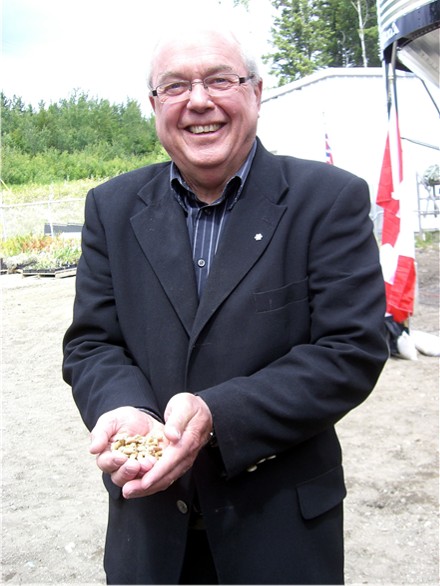BioEnergy Program Starts at UNBC
By 250 News
Tuesday, June 30, 2009 02:31 PM

UNBC Interim President Dr. Charles Jago, holds a handful of wood pellets, which are the seeds of new research at the University
Prince George, B.C.- A research project aimed at showing the world the benefits of bio energy, has officially started at UNBC.
With half a million dollars from the Federal Government, and a year’s worth of pellets, the project will be the primary heat source for the I.K. Barber Enhanced Forestry Lab.
Currently, the lab pays about 36 thousand dollars a year to heat the building with natural gas. Part of the research will look at the cost savings.
The system was up and running during a special media event today. It is quiet, and the small boiler has a bag house to limit emissions to levels below 20 parts per million.
The system is expected to use 300 tonnes of pellets per year and supply should not be an issue “There are plants producing 600 thousand tonnes of pellets per year within a 100 km distance of UBC says John Swaan of the Canadian Wood Pellet Association.
Dr. Charles Jago says the research planned will measure all of the material and energy in and out to complete the first energy balance of pellet heater “By the end of the year, we are confident that we will also have the cleanest pellet system in North America and unique made-in the north solutions for testing and monitoring emissions.”
Previous Story - Next Story
Return to Home










Is it possible that they are being used as bio fuel?????
Is is possible that they have been used as bio fuel for the past 10 or more years????